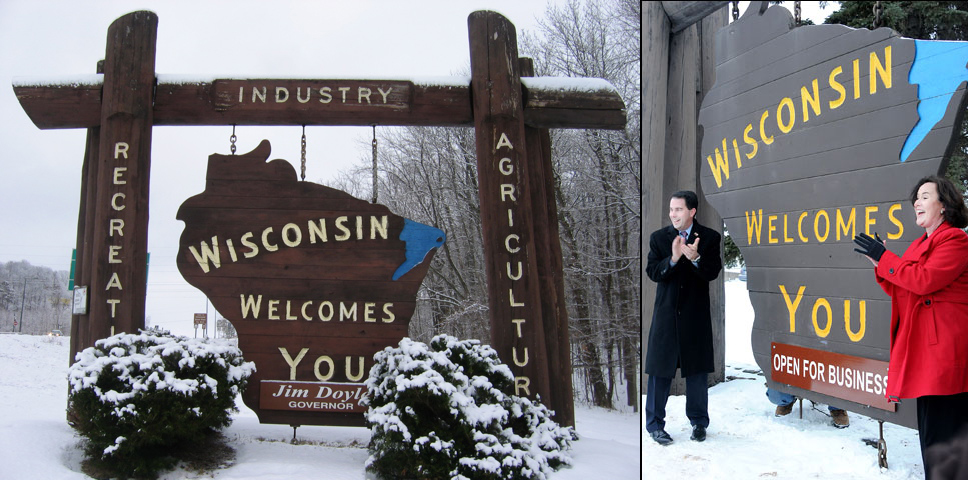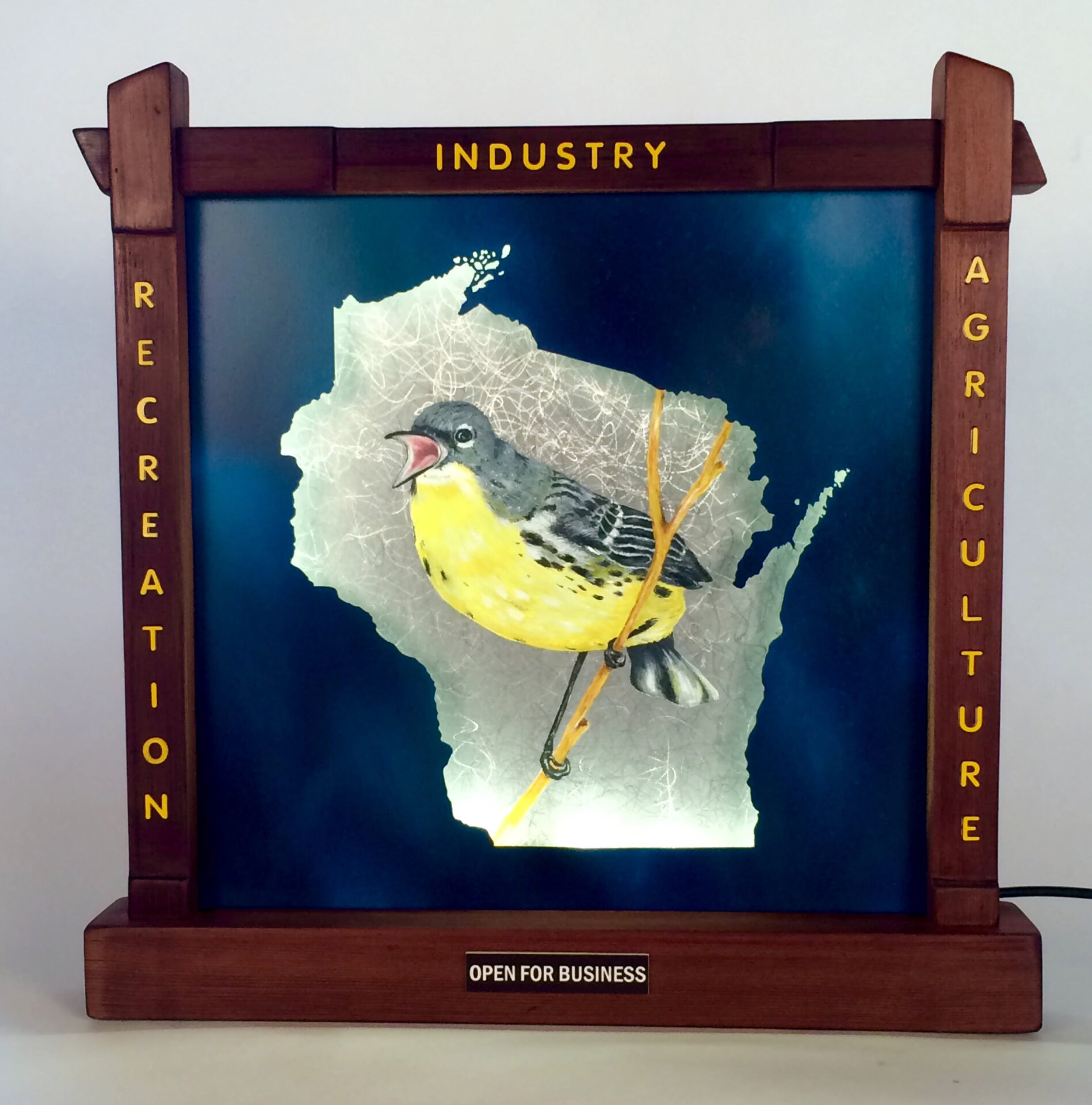Kirtland’s Warbler: ours is a moral landscape
“Wisconsin is Open for Business.”
This has been Scott Walker’s mantra since he started campaigning for the governmental office of Wisconsin in 2010, and following his election, in 2011, he had 23 “Wisconsin Welcomes You” signs updated to read “Open for Business.”
The slogan leads a campaign and structure of policies in Wisconsin to make all decisions focused on the goal of job creation.
In his keynote address back in 2011, Walker stated, “‘And as your governor, I make this pledge: Wisconsin is open for business. We will work tirelessly to restore economic growth and vibrancy to our state. My top three priorities are jobs, jobs and jobs.'”

But such policies as “Recreation, Industry, Agriculture,” now followed by the newest, “Open for Business,” frequently have significant, negative environmental consequences. When we talk about “job creation” and “economic growth,” our measurement is inevitably dollars, and to focus on job creation with such urgency is to force us to play for the companies that can bring the most dollars, and not necessarily with the most environmental conscience. History has shown us time and again that when we quantify the worth of the land and natural resources by their usefulness in industry and capital gain, we do so with the short-term goals of capital success, followed by the expense of long-term consequences.
So when the Kohler Arts Center in Sheboygan, Wisconsin, released a call for artists to respond to the theme of Waysides, I knew this was a call worth responding to. Waysides are the familiar rest stops for tourists and commuters traveling by car. The original idea came from Herbert F. Larson, a highway engineer in 1918 who saw roadside parks as a way to maintain the scenic forests along the roads. Larson sought to create places for people to pause on their journeys, picnic, and enjoy nature, and “to keep alert and ahead of the woodsman’s axe” so to preserve the forests.
His idea took off quickly as other rest areas appeared across the nation, though the numbers have dwindled in recent years as travelers opt for speed and convenience. The prized real estate by the turnpikes now gets contracted to private retailers and the restaurant industry. Today, the US has over 100,000 fast food restaurants, many of which serve as the rest stops for weary and hasty travelers.

Kirtland’s warbler is a Wisconsin and federally endangered bird that makes its home in parts of Wisconsin, Michigan, and Ontario. It makes its home at the base of young jack pine trees. As people settled the Midwest and northern regions, they cut away the pine forests that these warblers called home, never to be restocked. The trees can only grow so far north, so as the forests were cut away the warblers became locked between a northern boundary and the Great Lakes. 50 years ago, Kirtland’s warbler nearly went extinct. In 1985, only 1000 pairs still existed. The bird has made a slow comeback thanks to conservation efforts in the last 30 years. The population has grown to 5000 and in 2005, just eleven years ago, it was observed in Wisconsin, a sign of the birds’ recovery and regaining of territory.
To move “forward” with an “Open for Business” policy and mindset is to destroy the progress we have made to restore the things that we were responsible for destroying in the first place.
This isn’t the first time I’ve used my artwork to respond to irresponsible/misguided land management. I refer you to my statement and piece titled, November Reliquary, as another means of visually expressing these failed land management practices, as well as my painting series, Endangered Wisconsin, where I use beauty as a means to show how our policies have led to the demise of some amazing plants and animals.
We have looked at the environment as capital, as something for us to benefit and profit from. In the past, we have used survival to justify these endeavors. They say that hindsight is 20-20, and in these days of plenty and sound environmental science, we can choose how to use our money, our wealth, and our knowledge. If we have the ability to afford a 15 year old war, then we have the resources to legitimately address the looming threat of climate change. It is time to give back.
